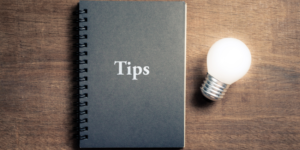The creative process is a vital aspect for any professional or aspiring designer. How you approach and organize your workflow can make all the difference in the quality and efficiency of your creations. In this article, we will present eight valuable tips to help you master the creative process and enhance your design workflow.
Set a Clear Objective
Before embarking on any design project, it is essential to establish a clear objective. Ask yourself what the purpose of the project is, what problem it aims to solve, or what message it intends to convey. Having a clear objective in mind will guide your creative efforts and ensure that every decision made during the design process aligns with that objective.
Conduct Research and Gather References
Research is a crucial step in an effective creative process. Explore references related to your project, such as works by other designers, current trends, and successful examples. This will help expand your vision, gain valuable insights, and avoid reinventing the wheel. Keep an organized reference folder and use it for inspiration throughout the creation process.
Brainstorm and Generate Ideas
Brainstorming is a valuable technique for generating creative ideas. Gather with colleagues, friends, or engage in solo brainstorming sessions. Write down all the ideas that come up, no matter how absurd or unconventional they may seem. Don’t worry about the quality of the ideas at this stage; the goal is to generate a large quantity of possibilities for later evaluation and development.
Sketch and Prototype
Before diving into the details, it is important to make quick sketches and prototypes. These initial visual representations will help visualize your ideas in a tangible way and allow you to assess their feasibility. Sketches and prototypes also facilitate communication and collaboration with team members or clients as they make ideas more accessible and understandable.
Prioritize Organization and Project Management
An efficient design workflow requires proper organization and project management. Utilize project management tools and software like Trello, Asana, or Monday to keep all tasks, deadlines, and resources well-organized. Set clear milestones and stages for each project and regularly track progress to ensure everything is in order.
Experiment and Take Risks
Creativity thrives when we allow ourselves to experiment and take risks. Don’t be afraid to step out of your comfort zone and explore new approaches or techniques. Test different styles, colors, typography, and layouts. Not all of your ideas will be successful, but it is through experimentation that you will discover unique and innovative solutions.
Seek Feedback and Be Open to Constructive Criticism
Feedback is an essential part of the creative process. Share your work with colleagues, mentors, or potential clients and be open to constructive criticism. Feedback can provide new perspectives, identify areas for improvement, and help refine your creations. Remember that the goal is to enhance the final outcome and deliver quality work.
Continuously Improve Your Skills
Lastly, never stop learning and improving your skills. The design industry is constantly evolving, and it is important to stay updated with the latest trends, tools, and techniques. Dedicate time to study, participate in relevant courses, workshops, or conferences. The more you invest in your professional development, the better equipped you will be to tackle challenges and enhance your creative workflow.
Conclusion:
Mastering the creative process is essential to become an efficient designer and produce high-quality creations. By following the eight tips presented in this article – setting a clear objective, conducting research and gathering references, generating ideas, sketching and prototyping, prioritizing organization, experimenting, seeking feedback, and continuously improving your skills – you will be on the right path to enhancing your creative workflow and achieving exceptional results. Remember that the creative process is unique to each individual, so adapt these tips
to your preferences and working style. Enjoy the creative journey and continue seeking inspiration to refine your skills and achieve even greater success as a designer. Remember that the creative process is not linear, and it may require iteration and adaptation along the way. Embrace the challenges and embrace the opportunities for growth and innovation. With dedication, practice, and a commitment to continuous improvement, you can truly master the creative process and create impactful designs that leave a lasting impression. So, go forth and unleash your creativity, armed with these essential tips, and watch your design workflow reach new heights of inspiration and innovation. The possibilities are limitless, and your creative potential knows no bounds.
So, don’t be afraid to experiment, take risks, and push the boundaries of your creativity. Embrace the process of trial and error, as it often leads to unexpected breakthroughs and innovative solutions.
Throughout your creative journey, remember to stay organized and manage your projects effectively. Utilize project management tools, establish clear timelines and milestones, and regularly assess your progress. This will help you stay on track and ensure that you meet your deadlines while maintaining the quality of your work.
Additionally, don’t underestimate the power of collaboration and seeking feedback from others. Surround yourself with a supportive community of fellow designers, mentors, or clients who can provide valuable insights and constructive criticism. Their perspectives can help you refine your ideas, identify blind spots, and take your creations to new heights.
Finally, keep honing your skills and stay updated with the latest trends and technologies in the design industry. Attend workshops, conferences, and online courses to expand your knowledge and learn new techniques. The more you invest in your professional development, the more equipped you’ll be to tackle complex design challenges and produce exceptional results.
In conclusion, mastering the creative process is a continuous journey of growth and self-discovery. By implementing these eight essential tips – setting clear objectives, conducting thorough research, generating ideas, sketching and prototyping, organizing your projects, experimenting, seeking feedback, and continuously improving your skills – you’ll be able to enhance your design workflow and create impactful and innovative designs. Remember, creativity is a limitless resource within you, waiting to be unleashed. So, embrace the process, trust your instincts, and let your imagination soar. With dedication, practice, and a willingness to push your boundaries, you’ll be well on your way to becoming a true master of the creative process.



